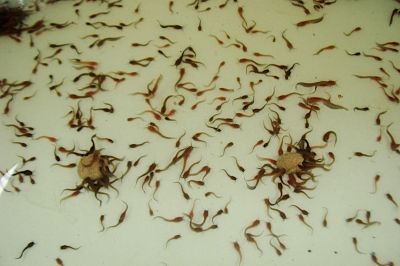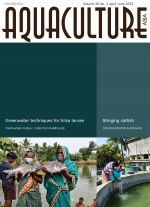Recent trends in seed production of stinging catfish, Heteropneustes fossilis, in India
29 August 2022 | S.K. Sahoo, S. Ferosekhan, S.N. Sahoo, P.C. Das and S.S. Giri | 323 Downloads | .pdf | 783.03 KB | Freshwater finfish, Hatchery and nursery, Inland aquaculture, India
Hatchery production of stinging catfish (Heteropneustes fossilis) seed is increasing as it is a good fish species favoured by consumers due to its high protein and lower fat content. Stinging catfish naturally breeds in the monsoon season, and is found gravid in the wild during July-September. In captivity it can be successfully produced using either induced or natural breeding techniques. This article summarises what is known about stinging catfish biology, and methods for its captive breeding, rearing of larvae and fry, feeding strategies and health concerns, to aid production of seed of this valuable catfish.
Publisher: Network of Aquaculture Centres in Asia-Pacific
Rights: Creative Commons Attribution.

